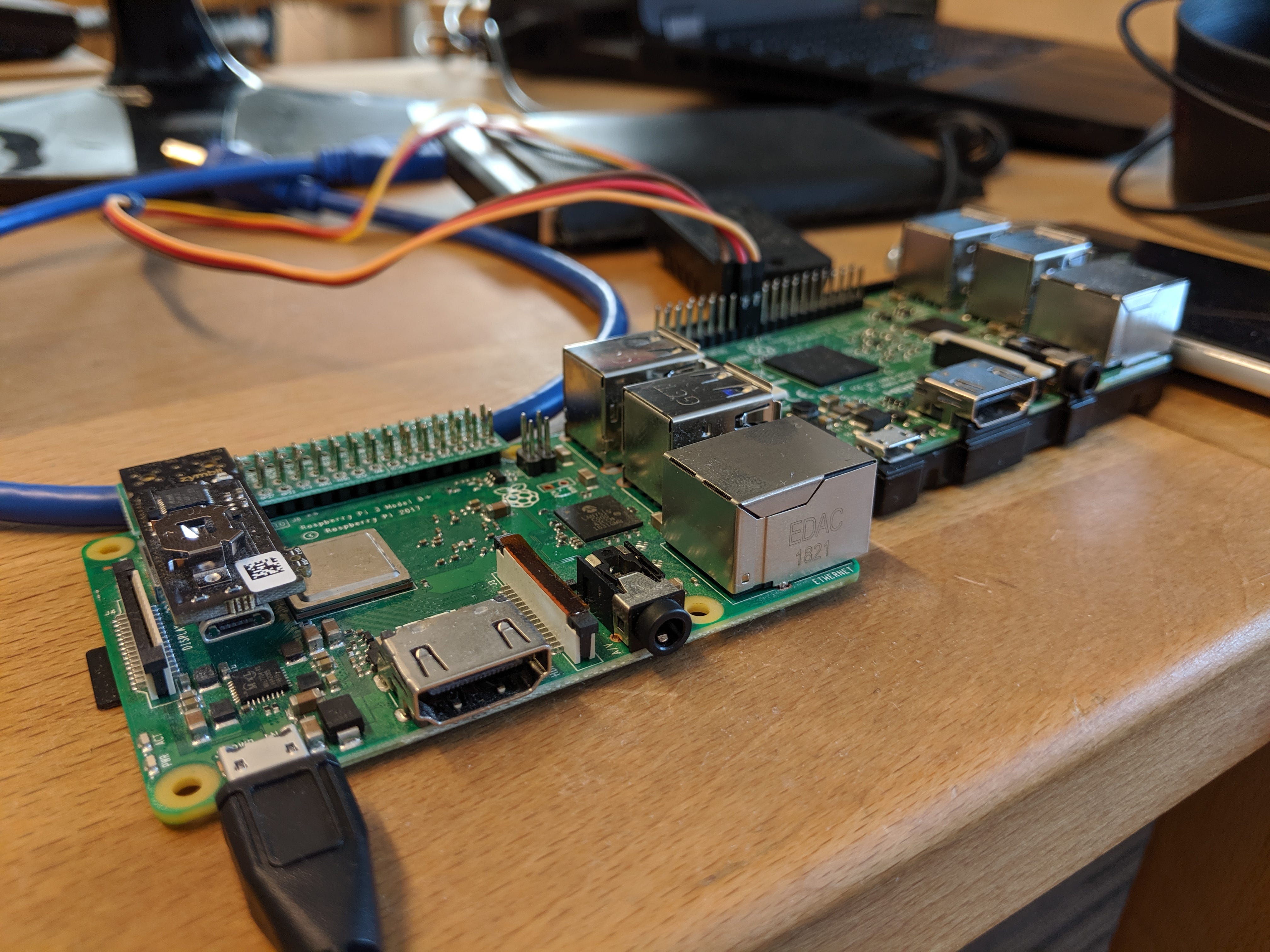- Raspberry Pi What Actions Generate A New Host Key In 2017
- Raspberry Pi What Actions Generate A New Host Key File
Mar 13, 2020 Although it’s possible to use previous revisions of the Raspberry Pi for this build, the Pi 4’s USB 3.0 ports really pay off. Previous Pi USB 2.0 sockets run at 30-35MBps, whereas the new USB 3.0 runs at 320-360MBps, which is like a ten-fold speed hike. Mar 02, 2014 The public key will be copied to the Raspberry Pi, and saved in a directory owned by the user “pi”. This directory (/home/pi/.ssh) will be protected by permissions to prevent unauthorised users from placing their own public keys here and thus gaining access with their own key pairs.
This is an effort to reverse-engineer the Raspberry Pi license key check forMPEG-2 and VC-1 hardware video encoding.
Patch
A patch for start.elf, a firmwware blob for the VideoCore IV processor used byall Raspberry Pi models, was posted toredditby /u/fuck_the_mpeg_laon 03-03-2017:
Applying it to a4.14.44 start.elf(latest as of time of writing) results in the following diff:
Some initial analysis was done by q3kon Hacker News:
Yes, it seems to patch a licensing function at 0xEC95FD4 [1] to always return 1,by patching the jump at 0xEC95FE2 (that should be only taken for the always-allowed H263 codec)to always be taken, thus always allowing all codecs.
Reverse-engineering
The initial entry point is disassembled using theVideoCore IV pluginfor IDA Pro 6 by hermanhermitage.
After loading and analyzing start.elf, we can find the is_licensed routineat address 0xEC96290 by jumping to the file offset given to us by xxdbeforehand. The relevant code sections are available insub_EC96290.asm and is_licensed.asm.
Here, two memory locations (0xEE86680 for MPEG-2 and 0xEE869E0 for VC-1)that point to the .bss segment are checked to determine the return value ofis_licensed. There are no other obvious references to these locations instart.elf, so memory-breakpoint debugging (TBD) is probably needed.
It is possible to configure your Pi to allow your computer to access it without providing a password each time you try to connect. To do this you need to generate an SSH key:
Check for existing SSH keys
First, check whether there are already keys on the computer you are using to connect to the Raspberry Pi:
If you see files named id_rsa.pub or id_dsa.pub you have keys set up already, so you can skip the generating keys step (or delete these files with rm id* and make new keys).
Generate new SSH keys
To generate new SSH keys enter the following command:
Upon entering this command, you'll be asked where to save the key. We suggest you save it in the default location (/home/pi/.ssh/id_rsa) by just hitting Enter.
You'll also be asked to enter a passphrase. This is extra security which will make the key unusable without your passphrase, so if someone else copied your key, they could not impersonate you to gain access. If you choose to use a passphrase, type it here and press Enter, then type it again when prompted. Leave the field empty for no passphrase.

Now look inside your .ssh directory:
and you should see the files id_rsa and id_rsa.pub:
The id_rsa file is your private key. Keep this on your computer.
The id_rsa.pub file is your public key. This is what you share with machines you want to connect to. When the machine you try to connect to matches up your public and private key, it will allow you to connect.
Take a look at your public key to see what it looks like:
It should be in the form:
Raspberry Pi What Actions Generate A New Host Key In 2017
Copy your public key to your Raspberry Pi
To copy your public key to your Raspberry Pi, use the following command, on the computer you will be connecting from, to append the public key to your authorized_keys file on the Pi, sending it over SSH:
Note that this time you will have to authenticate with your password.
Alternatively, if the ssh-copy-id is not available on your system, you can copy the file manually over SSH:
If you see the message ssh: connect to host <IP-ADDRESS> port 22: Connection refused and you know the IP-ADDRESS is correct, then you probably haven't enabled SSH on your Pi. Run sudo raspi-config in the Pi's terminal window, enable SSH, and then try to copy the files again.
Now try ssh <USER>@<IP-ADDRESS> and you should connect without a password prompt.
If you see a message 'Agent admitted failure to sign using the key' then add your RSA or DSA identities to the authentication agent ssh-agent then execute the following command:
Raspberry Pi What Actions Generate A New Host Key File
If this did not work, delete your keys with rm ~/.ssh/id* and follow the instructions again.
You can also send files over SSH using the scp command (secure copy). See the SCP guide for more information.
Let macOS store your passphrase so you don't have to enter it each time
If you're using macOS and after verifying that your new key allows you to connect, you can optionally choose to store the passphrase for your key in the macOS Keychain. This will make it so that you don't have to enter the passphrase each time you connect to your Pi.
Run the following command to store it in your keychain: